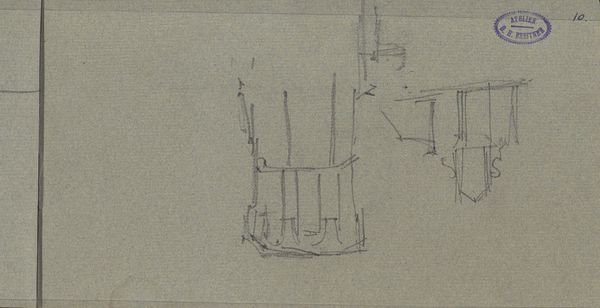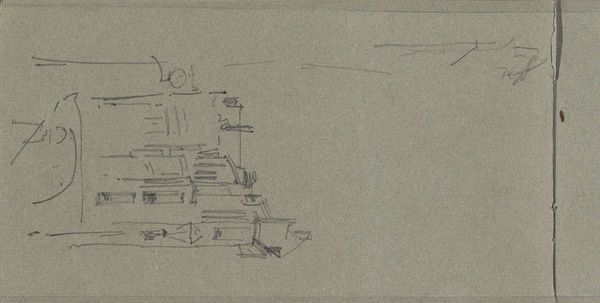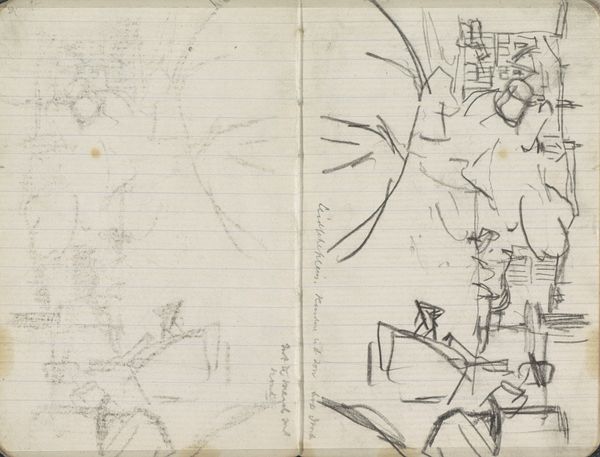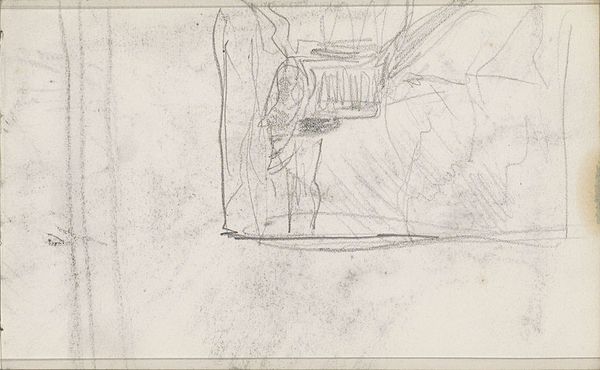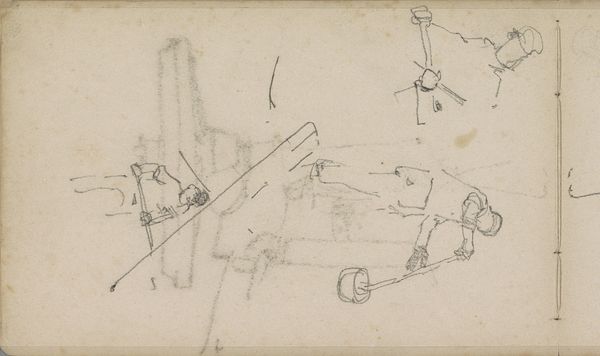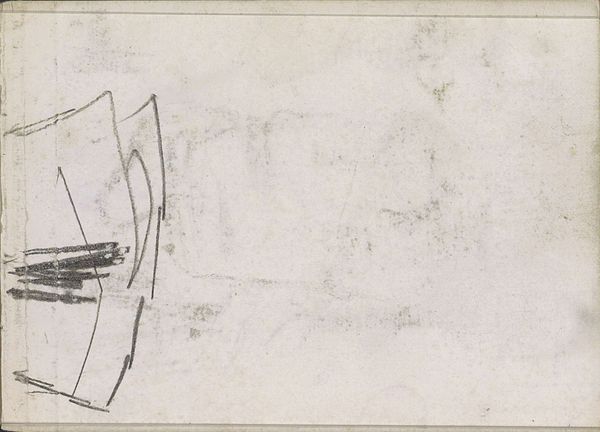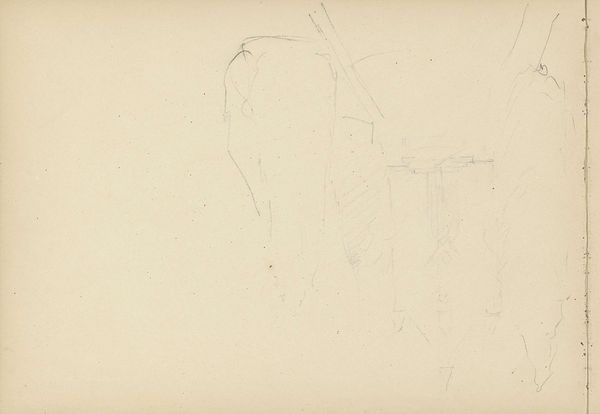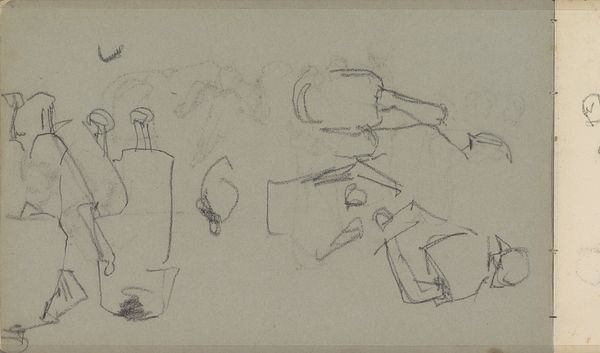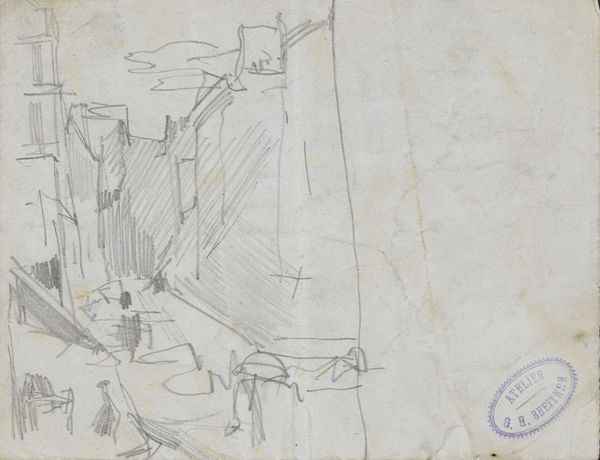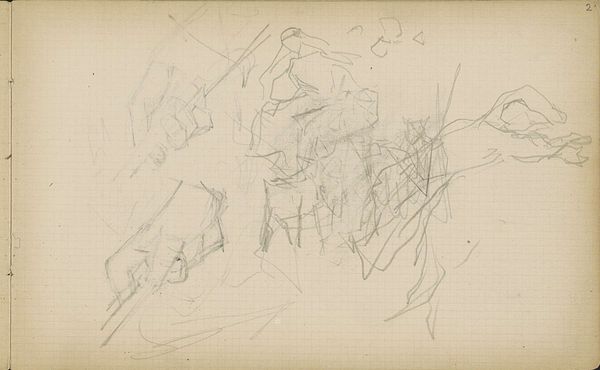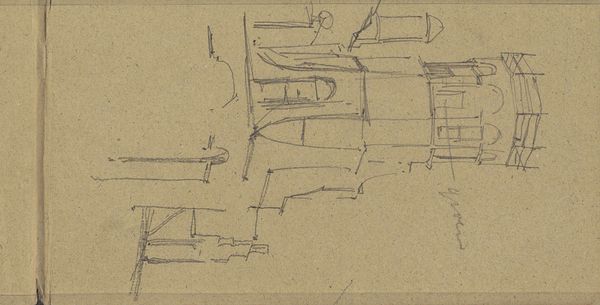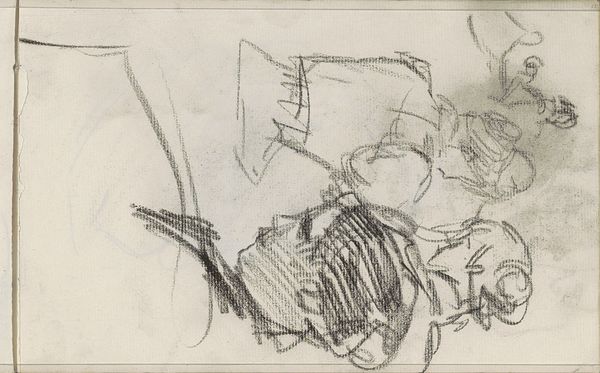
Gebouwen, waaronder mogelijk landgoed Torenzicht te Poeldijk 1883 - 1885
0:00
0:00
georgehendrikbreitner
Rijksmuseum
drawing, paper, pencil
#
drawing
#
impressionism
#
landscape
#
paper
#
pencil
Copyright: Rijks Museum: Open Domain
Curator: Here we have "Buildings, possibly including the Torenzicht estate at Poeldijk," a drawing created by George Hendrik Breitner between 1883 and 1885, currently held at the Rijksmuseum. Editor: It looks more like a ghost than a building at first glance. I mean that in the best possible way—it’s haunting. The pencil marks are so light, so tentative. I wonder about his process. Curator: Knowing Breitner’s intense engagement with urban life and his own outsider status allows us to frame this seemingly simple landscape drawing as a reflection on power, belonging, and observation. How did class intersect with visibility in late 19th-century Holland? Breitner gives us access through his sketches. Editor: The means of production here are so…portable. Pencil and paper. It emphasizes the fleeting moment, the capturing of something raw and immediate. He's using readily available, cheap materials for what appears to be preliminary work. How does this relate to his broader practice, to his engagement with the market? Curator: Perhaps these weren't initially intended as artworks for sale but served as crucial steps in Breitner’s understanding of the society he inhabited. His interest in everyday life aligned with democratic ideals gaining traction. This seemingly simple landscape becomes politically potent. Editor: Yes, and I'm thinking about the materiality again. The paper itself, its source, and the labor that goes into even producing something seemingly basic is still a vital economic element. His decision to work quickly, impulsively—or at least give the impression of impulsivity—hints at his rejection of academic polish. Curator: It’s also about the artist positioning himself in relation to his subject. Was he granted access? How was that access shaped by his social standing, gender, and artistic ambitions? Editor: Precisely. And the rapid execution—or perceived rapid execution—adds another layer of artifice and authenticity to his process, blurring lines between high art and casual sketch. Curator: It’s fascinating to reconsider such a small artwork, thinking of the networks of power relations enmeshed within the subject it represents but also the very paper that supports the pencil markings. Editor: It’s definitely changed how I see this image, recognizing it's more than just a landscape—it’s a record of labor, perception, and privilege embedded in something simple as a quick pencil sketch.
Comments
No comments
Be the first to comment and join the conversation on the ultimate creative platform.
